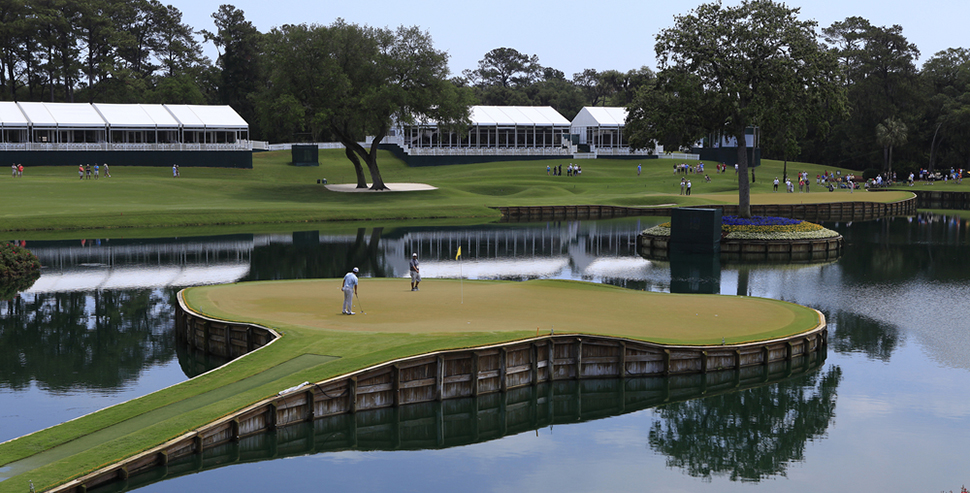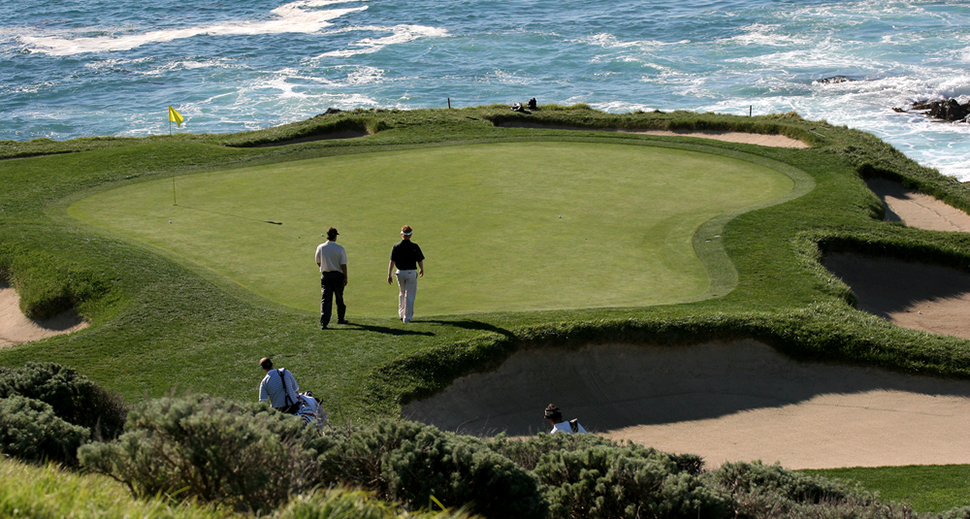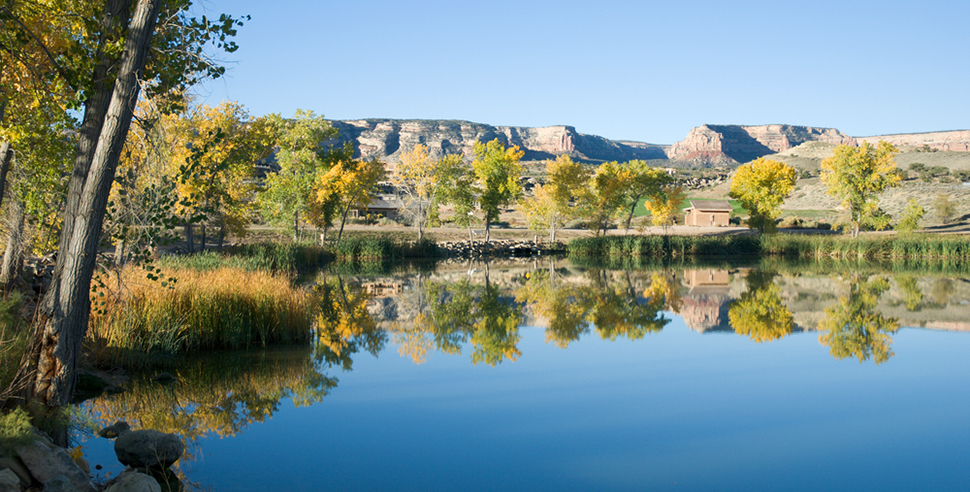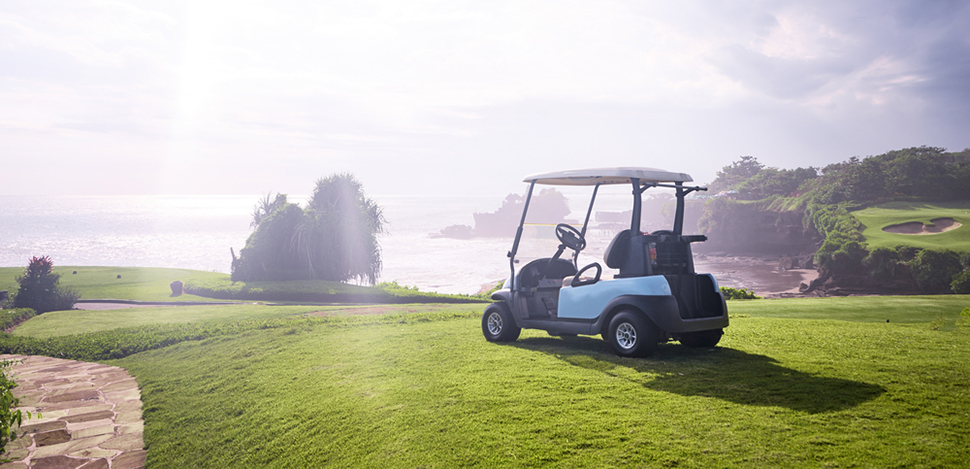Best Public Golf Courses in America
May 3rd 2018

What makes the perfect golf course? Is it the romance and history of playing where the greats played before you? Is it the stunning natural scenery and a design that makes the most of the natural topography? Is it the challenge of outwitting the designer and overcoming challenging fairways, devious hazards and frustrating greens? Or is it simply a friendly clubhouse, knowledgeable caddies, convivial company and a welcoming atmosphere?
People are draw to golf for so many reasons. Luckily, the extraordinary courses cater to all the pleasures of golf. This summer, check out our list of the best public golf courses in America to find the one that is perfectly suited to your game.

Course 2, Pinehurst Country Club, North Carolina. 7,588 Yards. Par 72
Famous for its long history, Pinehurst Country Club has been welcoming guests since 1895 and holds a special place in golf legend. Notable more recently for its environmentally friendly water conservation approach, the club recently received a Green Star environmental award from Golf Digest. All nine courses at Pinehurst are very playable and meticulously presented. The historic number 2 course, opened in 1907 and designed by Donald Ross, is the jewel in the crown. It has served as the site of more championships than any other course in the U.S. Both the U.S. Open and U.S. Women’s Open Championships took place here in 2014, and the U.S. Open returns in 2024. The course continues to offer a significant test for even the most accomplished golfer.

The attractive course, with its extensive areas of sand pits and clumps of wiregrass set against a backdrop of pine trees, typically plays firm and fast and demands a thoughtful and strategic approach. There are no gimmicks here, simply a well-designed course for serious players who enjoy a challenge. Sightlines from the tees are good but deceptive. Fairways are generous; there is no real rough, and only one hole involves water. The upside-down dish greens are fast, humpy, tight and very demanding. You'll regret it if you don't practice your chips, pitches and flops before you arrive.
The staff is friendly and approachable, and the clubhouse is well-appointed with a long hallway devoted to the history of the game and decorated with fascinating golf memorabilia. Make sure to enjoy the fine view of the iconic eighteenth green from the veranda. If you're a golf history buff, you won't want to miss the romance of playing here — but expect to pay handsomely for the privilege of trying out this bucket-list course.

Bandon Dunes, Oregon. 6,732 Yards. Par 72
Located on the southwestern coast of Oregon, the original course at Bandon Dunes offers both an homage to classic Scottish links courses and memorable views of the Pacific Ocean framed by plantings of golden gorse in mid-spring and late fall. Although Pacific Dunes is perhaps the more famous course at the club, a round or two on the original Bandon Dunes course offers great entertainment for discerning golfers.
Links golf demands a range of specialized shots, and Bandon Dunes is famed as one of the ultimate shot-makers courses, with success requiring precise mastery of aim and distance. Designed by Scotsman David McLay Kidd, the course is rugged and windswept and features a wealth of deceptively unassuming natural hazards and unique characteristics that are surprisingly challenging to overcome. Many of the fairways are extremely bumpy while the eighth fairway features a daunting wall of six bunkers. Clever, inventive golfers will have fun here while those who rely more on raw power may find it frustrating. The challenge of the fairways is balanced by forgiving landing areas off the tee and only mildly difficult greens.
A charming tradition of the course is to find the irrigation box underneath the tree near the tenth tee. Inside you'll find a book to sign, and you can take a slug of whiskey in return for leaving a small memento. It's worth noting that golf carts are banned here, and you'll be doing a lot of walking, so pack light!

TPC Sawgrass (Players Stadium) Ponte Vedra Beach, Florida. 7,245 yards. Par 72

Home to the Players Championship, the Stadium Course at TPC Sawgrass is the course that introduced the innovative idea of a green on an island, and the green for the 17th here has generated many copy-cats at courses around the country. Indeed, hard to reach greens are a strong characteristic of the course with water hazards, random bumps, craters and vast bunkers surrounding each green, making target practice a necessity.
The course mixes a selection of short, medium and long holes, both right and left doglegs, and the routing is designed such that no hole plays in the same direction as the one that precedes it. The par-4 18th offers a particularly tough challenge at 462 yards bordered by water down the left side. The sixth, seventh, 12th and 15th holes were redesigned in 2017, with the 12th now offering a tempting 303-yard drive straight to the green — if you can hit a perfect shot and not the water to the left or the mounds to the right.
The supremely testing design was put together by Pete Dye in the early 1980s and requires precision, accuracy and great creativity to overcome. While the championship course is decidedly difficult, it favors no one style of play over any other, making it a good choice for groups of golfers with a mixture of skills.

Pebble Beach Golf Links, Monterey, California. 6,828 Yards. Par 72
Perched atop the rocky Pacific coastline Pebble Beach offers the perfect pairing of land and sea with jaw-dropping views across Carmel Bay. The scenery is so distracting that it's easy to lose focus on your game, but this course is no walk in the park featuring nine seaside holes, narrow fairways and well-protected pocket-sized greens. The truly difficult holes run from the sixth to the 10th, with shots sailing directly above the ocean on a wish and a prayer. The maximum difficulty is found on the par-4 481-yard ninth, which combines an ocean border on the right with a deep gully bunker on the left that will severely punish both the timid and unwary.

The course was designed by Jack Neville and Douglas Grant and opened in 1919. Pebble Beach will host its sixth U.S. Open in 2019, and its fifth U.S. Amateur in 2018 and has hosted a PGA Tour event since 1947. Green fees at over $500 in peak season are among the highest in the world, and an average round here will take five hours.

Whistling Straights, Haven, Wisconsin. 7,790. Par 72
The course at Whistling Straights was designed by Pete Dye to look and play in a similar way to the seashore links courses in Ireland. The course successfully hosted the 2004, 2010 and 2015 PGA Championships and is the chosen location for the 2020 Ryder Cup.
Located on a former army base alongside Lake Michigan, the course is rugged and bracing rather than manicured. It showcases eight lakeside holes, deep hidden pot bunkers, expansive rolling greens and wind-swept dunes. Fog from the lake can create some interesting blind shots. The eighth hole alone features over 100 intimidating bunkers, while unexpected swirling winds around the green easily mar the finish at the 18th.
The eight-mile course up and down hills is a real workout that will tire you physically and mentally, and carts aren't allowed. You'll be ready for a stop in the clubhouse by the time you're done, and if you've worked up an appetite, try checking out the Irish-inspired hearty potato and leek soup.


Mirimichi, Tennessee. 7,400 yards. Par 72
Previously owned by celebrity Justin Timberlake, Mirimichi is a hidden gem less than 30 minutes from Memphis that offers over 7,400 yards of championship-level play for just $75 in green fees. Studded with deep pit bunkers, large, fast, elevated greens, oak-lined fairways, waterfalls, and picturesque creeks, the course offers between five and eight tee boxes on each hole to accommodate all player levels. The layout is varied with just enough hazards to keep it interesting.
Mirimichi features native landscapes, water conservation, wildlife habitat connectivity, integrated pest management and environmental education and has received the Audubon Classic Sanctuary Certification in recognition of its environmental sustainability.

Wild Horse, Gothenburg, Nebraska 6,955 yards. Par 72
Featuring a Scottish links-style layout, this impeccably-maintained course sprawls across 300 acres with many daunting areas of rough and pot bunkers. The routing at the Wild Horse course meanders through long maze-like trails bordered by tall fescue grasses reportedly inhabited by long-lost golfers trying to find their way back to the clubhouse, so make sure your golf cart is in good shape and perhaps add some bright color to help you find it again — unless you want to join them!
The course has a thoughtful layout. There is no water, but the deep bunkers are carefully positioned to offer a considerable challenge. The fairways are wide; that’s a good thing because if you lose your ball in the sagebrush and long grass, you'll need a lot of good luck to find it again. Players universally love the greens at this course, which are fast and clean, and the rates at around $50 for 18 holes offer unbeatable value.


Brickyard Crossing, Indianapolis 7,180 yards. Par 72
Designed by Pete Dye, this totally unique course is located inside and around the famous Indianapolis Motor Speedway Track. Four holes are actually located within the oval of the track with the remaining 14 adjacent to the backstretch of the racetrack. If you like serenity or scenery, this isn't the course for you, as raw engine power is frequently audible and the views are of the track.
You'll find all the characteristic Dye features at Brickyard Crossing, including softly undulating greens, deep sand traps, blind approach shots, elevation changes, drop offs and deep chipping areas. The last four holes are tricky with a creek presenting a significant challenge. The course charges a mid-range standard rate of $110 for 18 holes.

Redlands Mesa, Grand Junction, Colorado. 7,007 yards. Par 72

Designed by Jim Engh, Redlands Mesa is a truly spectacular golf course carved out around the base of the pink and red sandstone of the Colorado National Monument. Elevated tee positions offer amazing views of the Grand Mesa, and the bright green of the fairways contrasts sharply with the desert scrub and rocky outcrops.
Banked fairways, 41 bunkers, right and left dog legs, small pot bunkers and exhilarating, heart-stopping, downhill par-3s such as the 17th all add to the fun. The 575-yard fifth hole offers a risk/reward tee shot and a unique green design with a low section beneath the level of the main putting area. Reaching the flag from here with less than three shots would challenge even the most skillful golfer. Rates top out at $70 for 18 holes.

Tobacco Road, Sandford, North Carolina 6,532 yards. Par 71
Tobacco Road was designed by artist and designer Mike Strantz. It combines panoramic views with verdant woods, a significant amount of sand and an imaginative, strategic layout. The overall design is intentionally rustic, and the course is very well groomed. Rates vary from around $120 to $160 a round.
Each hole offers different ways to play it depending on your risk/reward preference and how lucky you are feeling. Holes like the first, the eight, the 16th and the 18th look immensely daunting from the tee, but smart well-thought-out shots will magically reveal the hidden fairways and contoured greens. Taking the easy shot off the tee will often result in a blind approach to the green or reveal previously unsuspected hazards. It's a particularly tricky challenge the first time you play and when you haven't yet learned the secrets of the course. Bring along your golf cart and your full bag of shots.


Shadow Creek, North Las Vegas, Nevada. 7,560 Yards. Par 72
Costing a reported $60 million to build, Shadow Creek started life as a private course and is considered by many to represent designer Tom Fazio's best work. The money was spent on carving out from the flat desert of Nevada verdant rolling hills and valleys that evoke the pleasing lushness of Georgia or North Carolina. The pristine opulence of the course is understated by Las Vegas standards and exudes both an enviable exclusivity and a matching price-tag that you won't find elsewhere.
The most memorable holes include charming water features. The fourth trends to the left, embracing a pond, while a waterfall enhances the tiered postage-stamp green for the 17th, and a stream bisects the fairway for the 15th. As is fitting for a course aimed at high-rollers, the 18th offers a major risk/reward trade off with bolder shots paying off in terms of a far shorter approach to the green.
